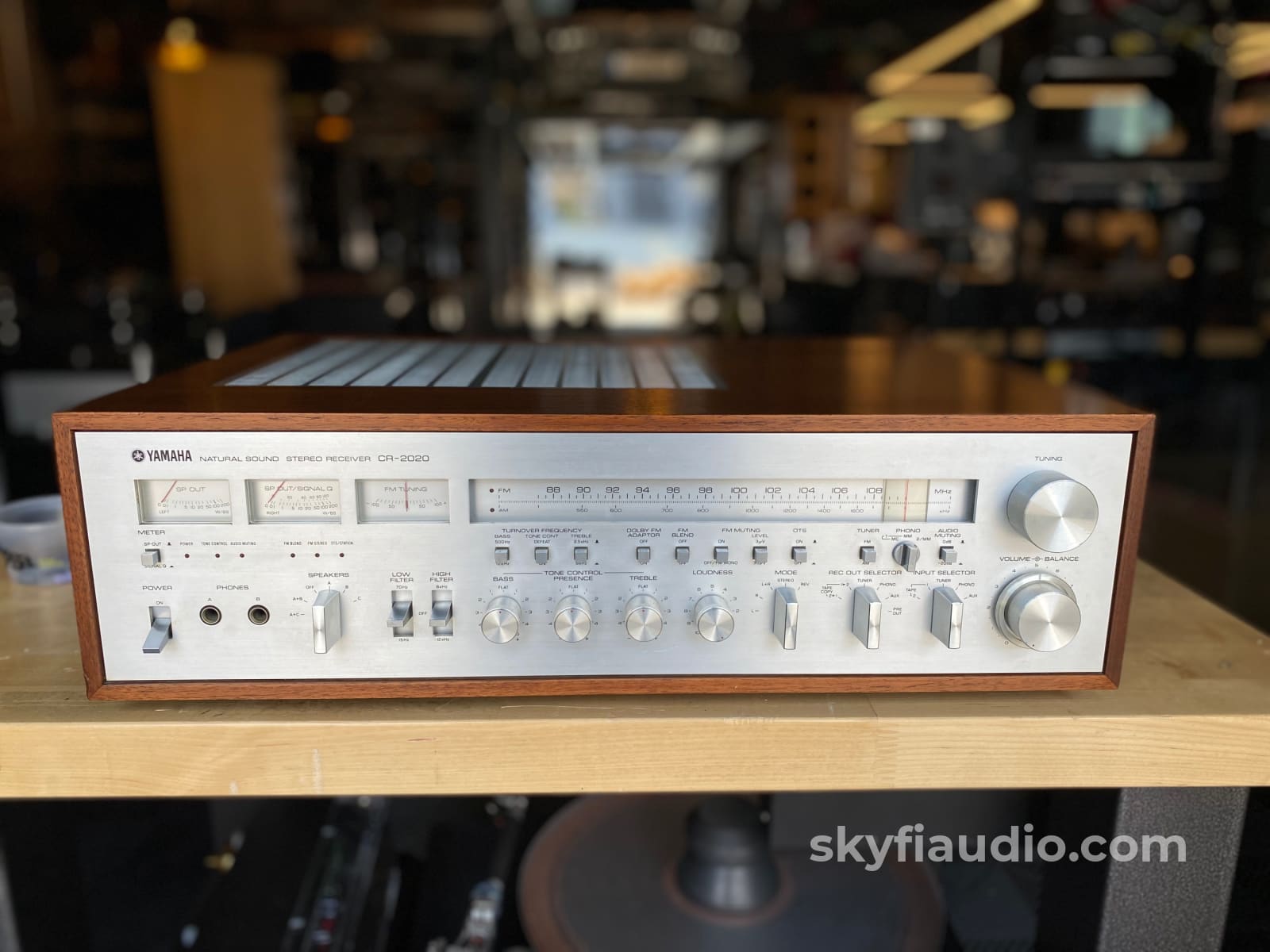
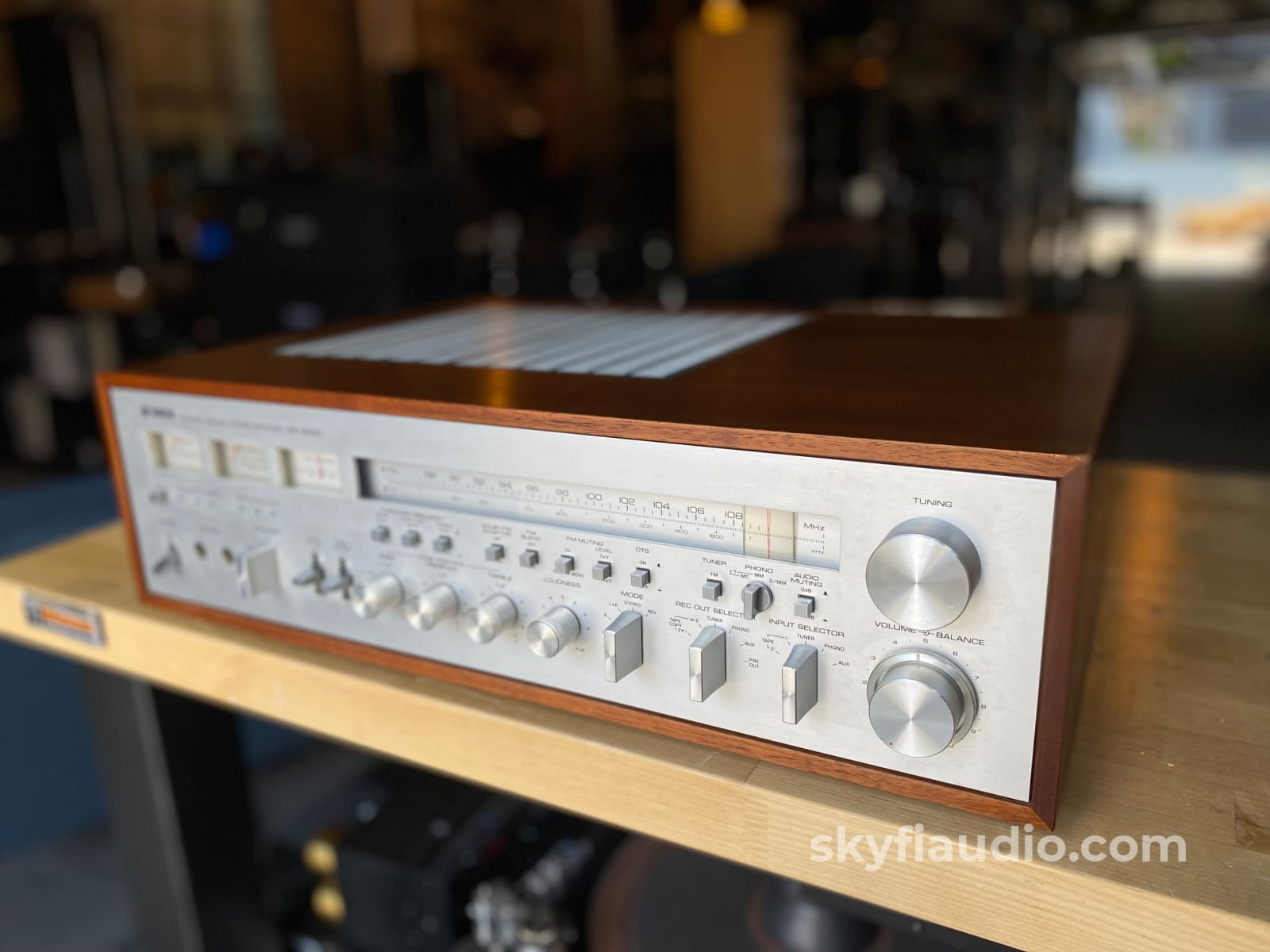

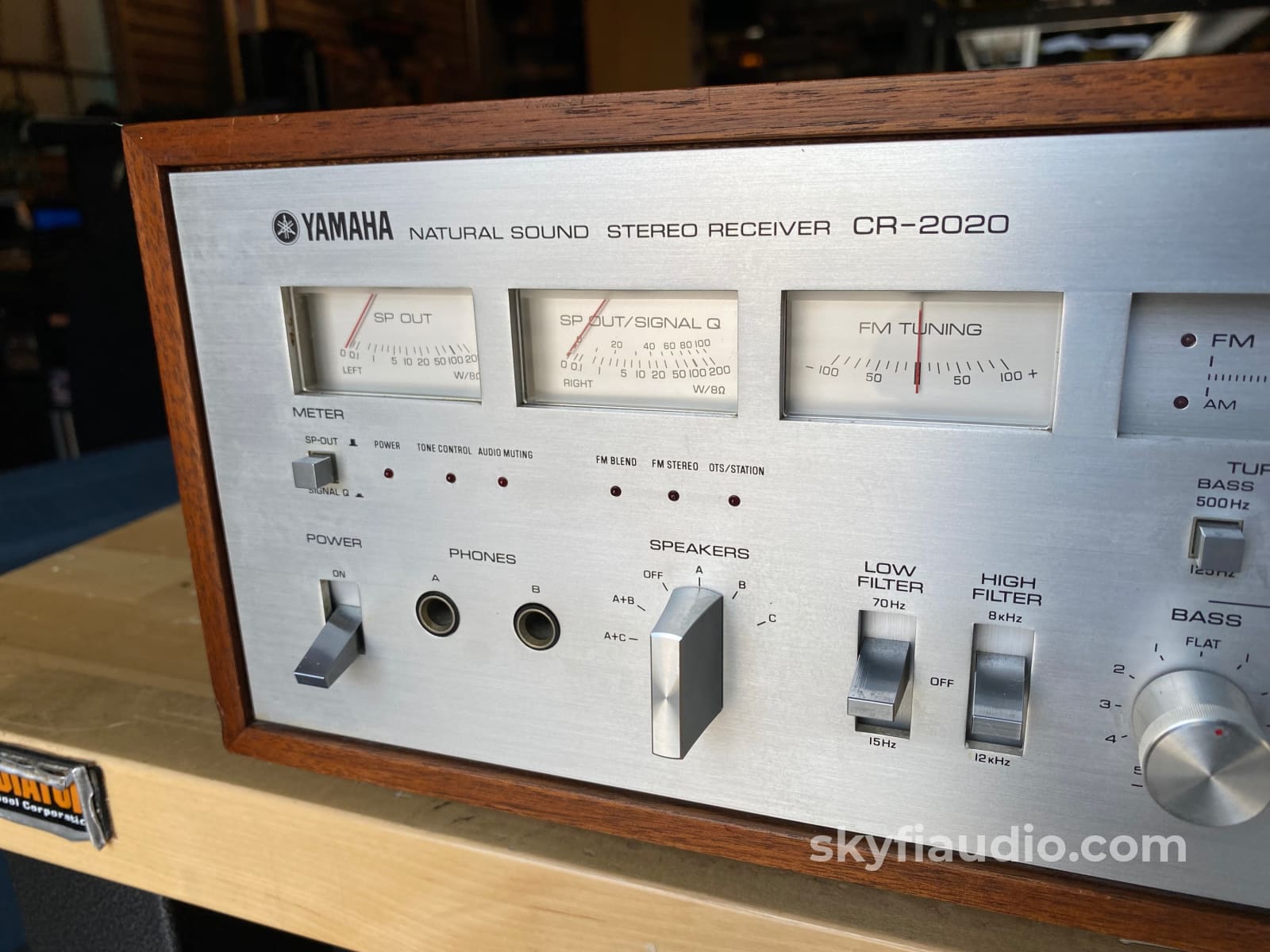
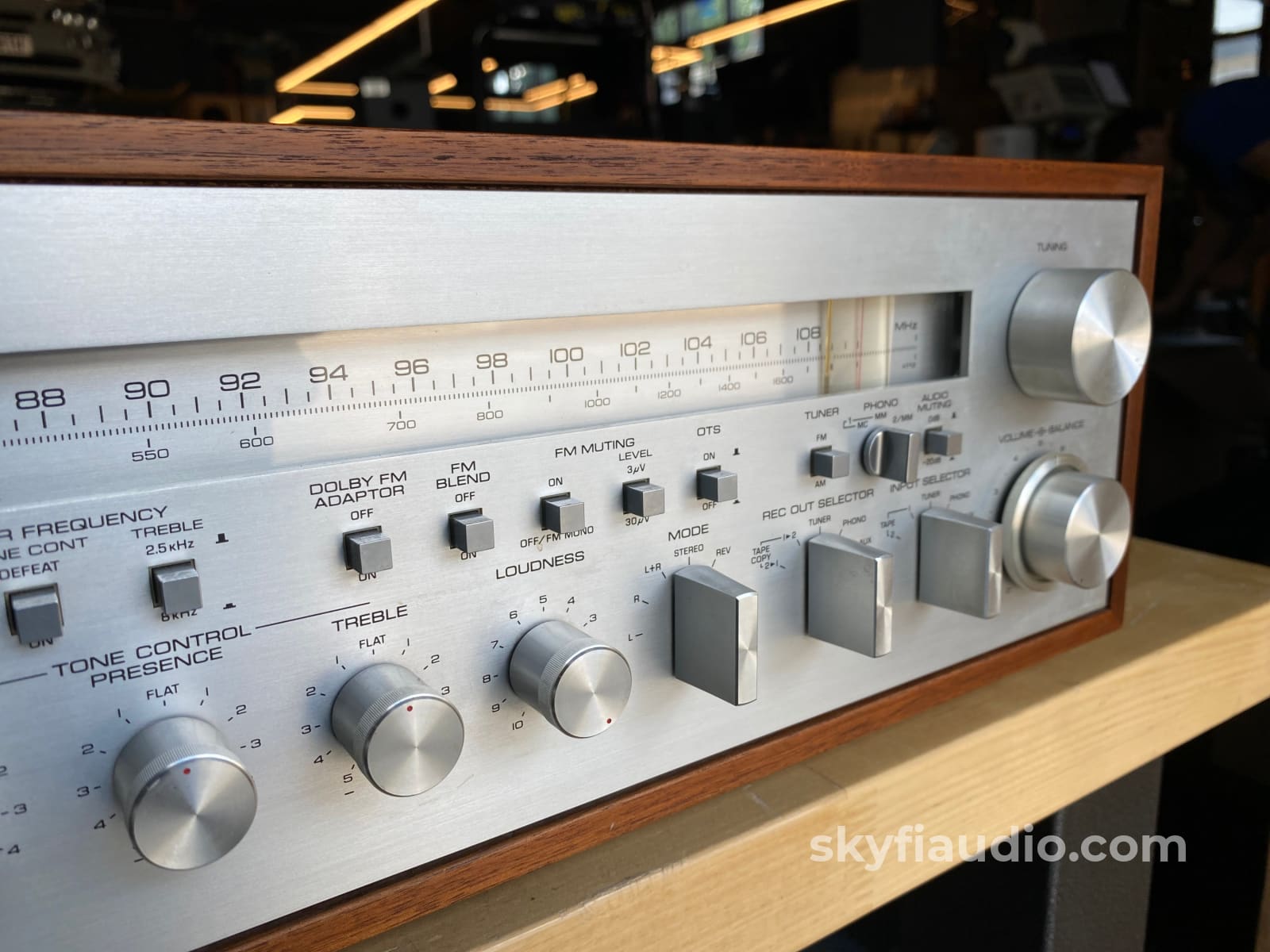

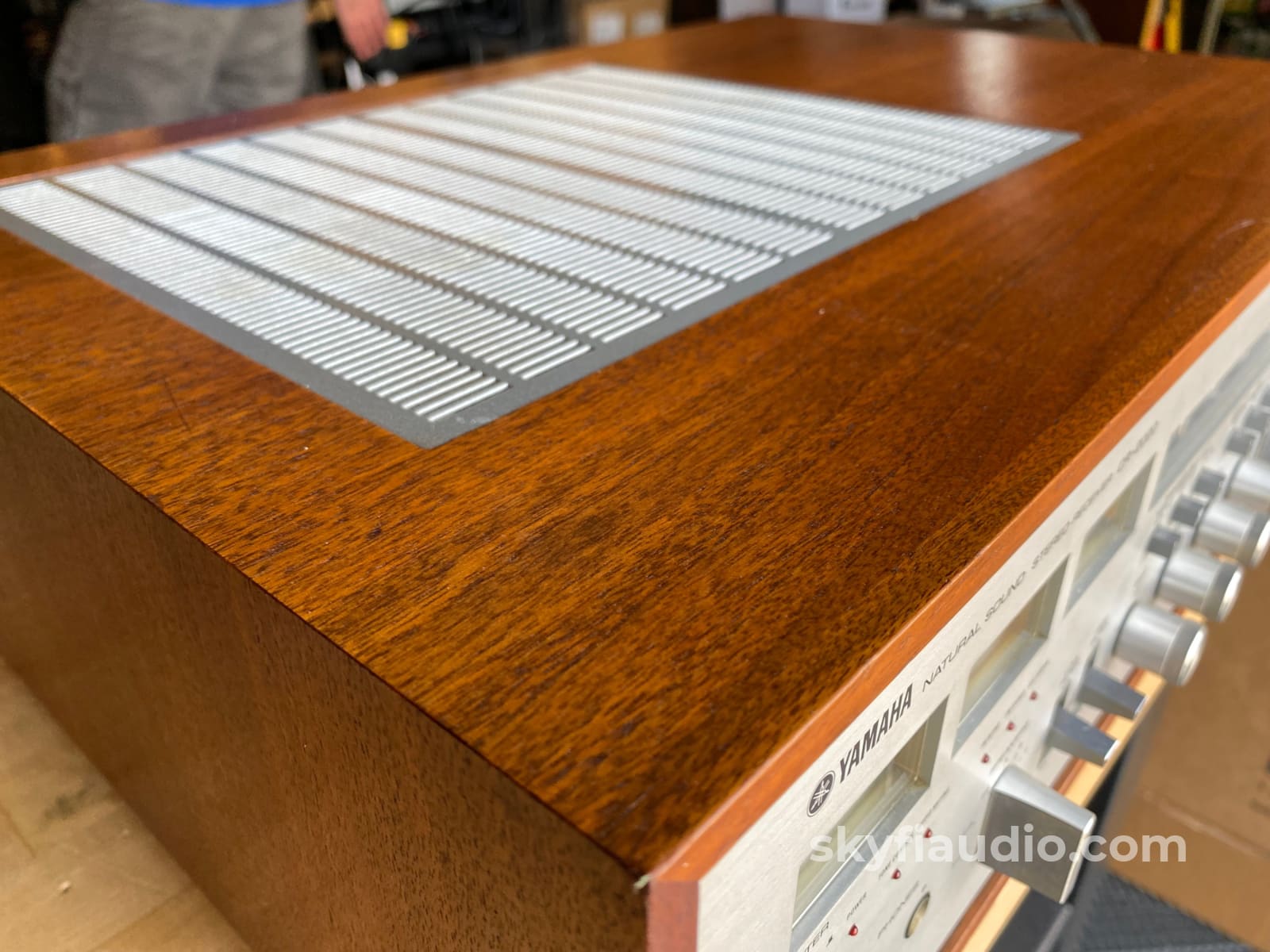





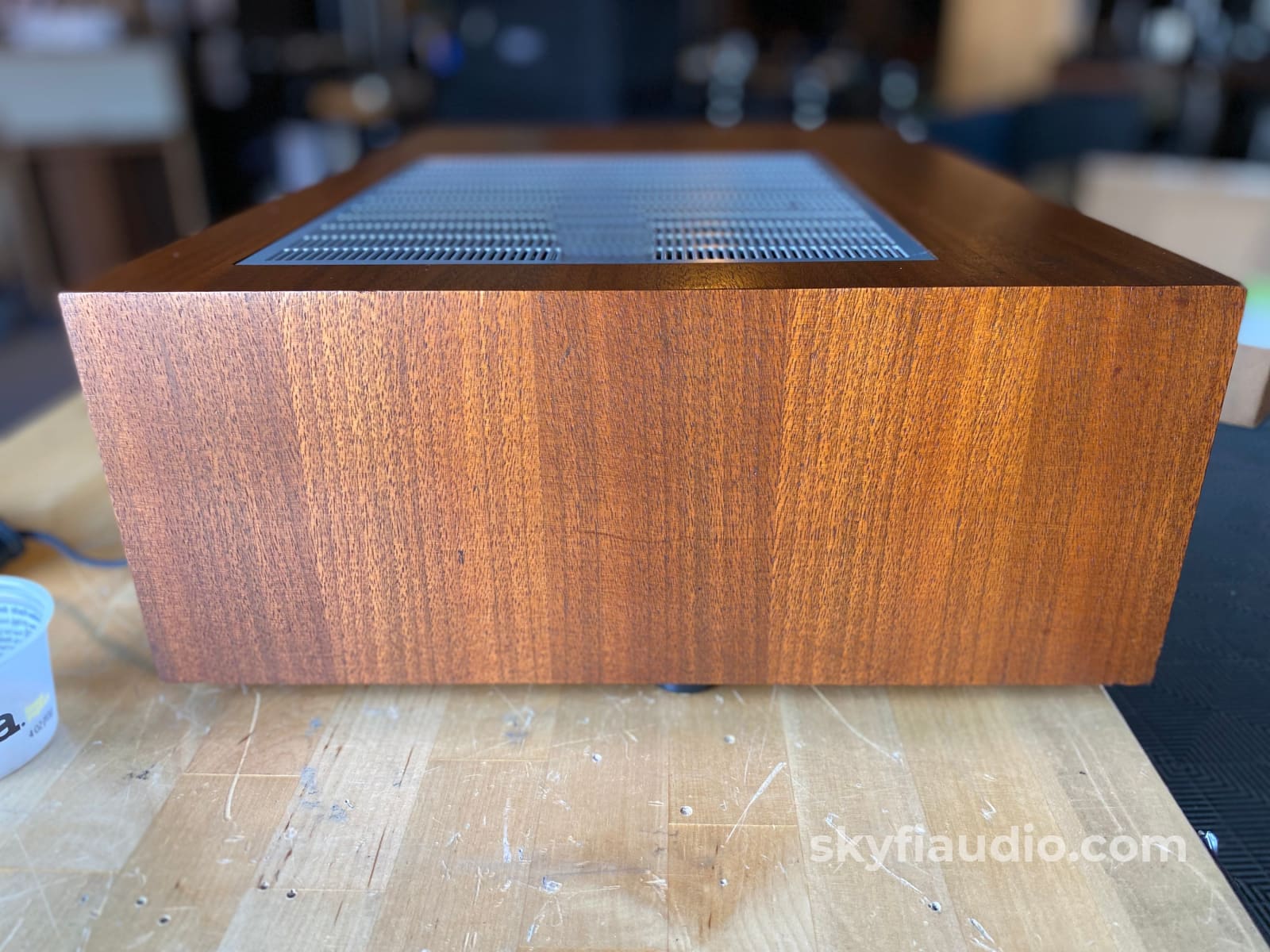
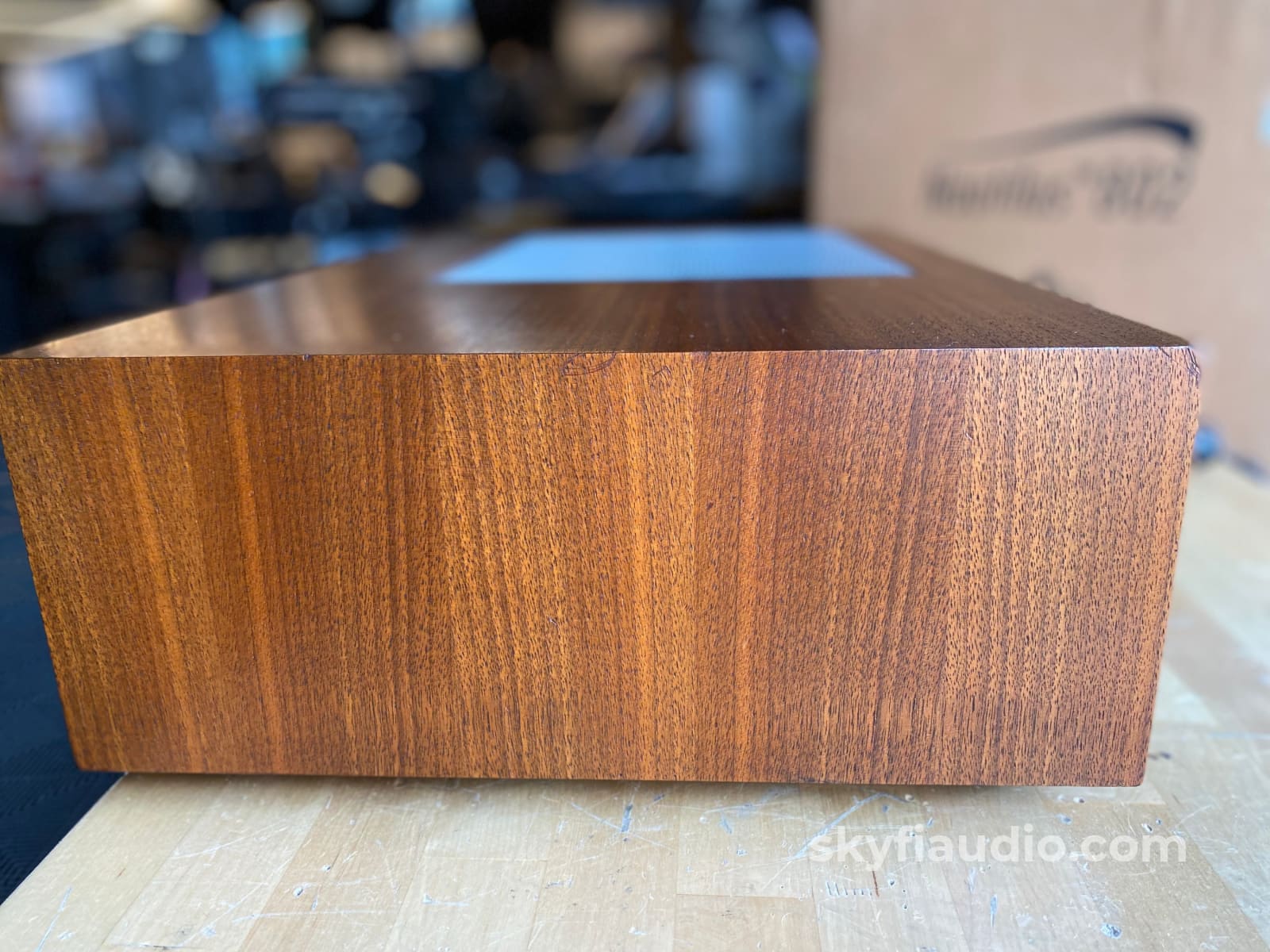

Yamaha CR-2020 Vintage Stereo Receiver - Serviced and Gorgeous
Free Shipping on Most Electronics - Excludes Speakers and Items Requiring Freight - Contiguous U.S. Only
Pickup currently unavailable at SkyFi 479

Yamaha CR-2020 Vintage Stereo Receiver - Serviced and Gorgeous
SkyFi 479
479 South Broad Street
Glen Rock NJ 07452
United States
General:
Super clean and very cool looking CR-2020 from Yamaha. Serviced in-house and working brilliantly. We replaced a bunch of critical components and performed Yamaha service bulletins ensuring long term reliability and original sound quality.
Cosmetics are stunning from the faceplate to the wood cabinet. It would be hard to find a cleaner example, hence the price tag.
SkyFi Service Notes:
Service Bulletin Power Supply Maintenance Completed:
• Overheated and fusible resistors replaced with higher wattage types.
• Tired voltage regulator pass transistors replaced.
• All power supply caps checked for value and ESR, out of spec parts replaced.
General Service Notes:
• Known troublemaker purple caps in tuner replaced.
• Tuner aligned.
• DC offset within spec.
• Bias set
• Lamps checked for proper operation.
• Controls checked and cleaned as needed.
• Cabinet treated with Howard's products.
From Classic Receivers:
If you’re familiar with monster receivers then you know that the Yamaha CR-3020 is a Monster! Well, this receiver is just shy of a monster. Maybe Beast would be appropriate? It’s the Yamaha CR-2020 and is, of course, the smaller sibling of the CR-3020. Yes, the CR-3020 put out a massive 160 watts per channel but this CR-2020 shells out a very respectable 100 watts per channel. Besides, the CR-3020 didn’t even sell all that well.
The CR-2020 is a fantastic mix of everything you want in a big, powerful receiver. Lots of power, tons of features, sharp, clean styling and a cool look when the room lights are dimmed. And, for that macho effect it weighs in at about 43 pounds and is over 21 inches wide and 16 inches deep. It was introduced in late 1977 and was priced very well since, at that time, the Japanese were able to build stereos cheaper than other US or European manufacturers.
Some interesting features are:
• Continuous loudness compensation (variable loudness control)
• Two turntable inputs (one being mc)
• Independent audition and recording
• Connections for three sets of speakers
• Linear differential gain IF stage
• 4-gang tuning capacitor with dual-gate MOS-FETs
• Multi-function FM/AM/Signal/Multipath/Power meters
• MPX section included into NFB loop
• High-Blend switch (FM)
• Automatic or Manual OTS tuning system
• DOLBY adapter switch
• 2 Headphone jacks for Yamaha Orthodynamic and/or normal headphones
Check out the massive transformer at the bottom right. Those who aren’t Yamaha fans usually point to the bright sound of their receivers and overall lack of warmth. That may or may not be the case but Yamaha tried to make the output signal as true to the input signal as possible. I too find the Yamaha’s a little dry sounding but I have to wonder if my ear just prefers a little more distortion which is usually what gives a receiver that ‘warm’ sound.
Two phono inputs and 3 pair of speakers connections. You can’t beat that. It even has a built in pre-amp section for moving coil cartridges. The Yamaha CR-2020 does have a weakness though. The power switch tends to fail and replacements are not that easy to find. So, if you’re contemplating buying one make sure the switch works and handle it gently when turning the power on and off.
Yamaha receivers are known to be low distortion and their circuitry was designed to affect the signal as little as possible throughout the amplification path. The CR-2020 lives up to this ideal by having a maximum of 0.05% total harmonic distortion. In fact, Yamaha’s sales literature at the time coined the term Noise-Distortion Clearance Range (NDCR). Instead of measuring noise and distortion under lab conditions they setup the receiver in a typical listening situation and then measured the noise and distortion. They also called it Real Life Rated!
Vintage Yamaha Sales Advertisement:
You probably know that Yamaha offers one of the world's most powerful and complete ultra low distortion home audio component systems. It's also one of the most expensive.
But with the CR-2020's excellent cost performance you get many of the unique features developed for the spare no expense audiophile.
The CR-2020 is part of a new series of Yamaha audio components created for one key purpose: to provide distortion free natural sound in your home under real listening conditions.
To realize this goal we had to create a whole new method of measuring performance Noise Distortion Clearance Range. What does it show? NDCR is a range, the whole range of powers for which total harmonic distortion and noise are below a given level.
It requires that all pertinent measurements be made under actual listening conditions; through all amplification circuits used in actual listening (i.e., Phono Input to Speaker Out), and at the volume control settings preferred for normal listening levels.
Up to now distortion has usually been measured for only part of the amplifier circuitry (main amp, equalizer amp). What's more, this measurement has usually been made at maximum volume setting. But components which perform well at this level often show remarkably inferior signal to noise, distortion and even frequency response characteristics at realistic listening levels.
That is why Yamaha's Noise Distortion Clearance Range is measured at -20 dB volume setting rather than the conventional 0 dB: the performance ratings you see represent the actual in home sound you hear, not simply test bench figures. The actual NDCR range for the CR-2020 is a superb achievement in distortion free performance: 100 mW to 100 W.
Translated into home listening, think of it this way: if you set your volume control for most normal listening, average power to your speakers will be 1-2 watts. A pianissimo passage in this case will be approximately 100 mW. So the full NDCR range achieved by the CR-2020 means superb, pure fidelity in every conceivable listening situation.
To us at Yamaha NDCR is more than just a measurement. It reflects the design approach to all our music products. Because we pay such close attention to their sound in actual use, our engineers developed this assessment method to help build in the same tonal response for home audio enjoyment.
Brand Background:
Yamaha kabushiki gaisha, /ˈjæməˌhɑː/; Japanese pronunciation: [jamaha]) is a Japanese multinational corporation and conglomerate with a very wide range of products and services. It is one of the constituents of Nikkei 225 and is the world's largest musical instrument manufacturing company. The former motorcycle division was established in 1955 as Yamaha Motor Co., Ltd., which started as an affiliated company but later became independent, although Yamaha Corporation is still a major shareholder.
Ownership:
Single Owner
Connections:
RCA Inputs and Outputs. Spring terminals for speakers. Captive power cord.
General Sound:
Neutral sound with little to no coloration
Cosmetic Condition:
7/10 = Good. One or two minor scratches. Well Maintained.. See our detailed rating description here.
Working Condition:
Working perfectly and tested in our lab and listening room.
Included:
Just the unit and power cord.
Packing:
Will be packed using our highly developed in-house process and custom packing materials.
Specs:
Power output:
105 watts per channel into 8Ω (stereo)
Frequency response:
10 Hz to 100 kHz
Total harmonic distortion:
0.05%
Damping factor:
40
Input sensitivity:
0.05 mV (MC)
2.00 mV (MM)
120 mV (DIN)
120 mV (line)
Signal to noise ratio:
95dB (Mic)
100dB (MC)
85dB (MM)
Output:
150mV (line)
30mV (DIN)
0.775V (Pre out)
Speaker load impedance:
4Ω (minimum)
Dimensions:
21.26" x 6.57" x 16.34" (540 x 167 x 415mm)
Weight:
41 lbs.
Approximate Age:
1978
Link to Manual:
Click Here
Testing Process:
We start with a visual inspection of all internal components to make sure that there are no signs of heat stress or damage. Capacitors are checked for telltale signs of predictive failure including bulging, shrunken wrappers, or physical leakage. We also inspect the PCBs for discoloration from resistors or transistors that may have been running hot. On vintage units we often spot check select capacitors for value and ESR.
If the device has the ability to decouple the preamplifier from the power amplifier, we remove the jumpers and independently test each section. If the device cannot be decoupled, we assess the electronic condition of the piece by analyzing the speaker level output only.
We start by connecting the “preout” jacks of the receiver to a Sencore PA81 Power Analyzer which simulates real world loading conditions and gives us an oscilloscope interface. The first order of business is checking that the volume control works smoothly throughout its entire range with acceptable channel balance. This is accomplished by feeding a 1KHz sine wave into one of the preamp’s line level inputs while monitoring the preamp’s output on an oscilloscope. We then switch to a 1KHz square wave to test the tone controls, loudness function, and filters where applicable. During this step we are watching for equal alteration of the test signal by both channels. This also helps us identify dirty controls that will need treatment. Once the basic line stage functions are verified, we test each input individually. This is especially important for devices that use relays to select their sources.
If the preamp section is equipped with a phono stage we test that as well. We use an inverse RIAA filter which allows us to feed a reference test signal into the phono input with the proper RIAA equalization and level. A square wave or sine sweep is used to verify that the device’s phono stage is faithfully reproducing the RIAA curve.
To test the tuner, we connect one of the tape outputs to the Sencore PA81 and the antenna terminals to a Sencore SG80 which allows us to “simulate” an ideal radio station using precision test signals instead of music. This device, in conjunction with an oscilloscope allows us to properly evaluate the following parameters:
7. AM Reception (Where Applicable)
8. FM Mono Reception & Tuning Meter Function
9. FM MPX Reception (Stereo)
10. Dial Tracking - How accurately the tuner dial or display indicates the actual frequency of the broadcast being received.
11. Stereo Separation - A properly working stereo tuner will have minimal crosstalk between the left and right channel.
12. Sensitivity & Signal Strength Meter Function - By lowering the output of the SG80 we can simulate weak stations and determine how well the tuner will be able to pull in weak distant stations. This adjustment also helps us verify signal strength meter function.
If the tuner has acceptable performance related to the parameters above, we connect the unit for listening tests with a simple dipole antenna. We listen for audio reproduction quality of local stations and evaluate how many stations the tuner can receive while we sweep through the dial. We are looking to verify that the tuner can decode stereo on strong local broadcasts and pick up a wide variety of local stations at the bottom, middle, and top of the frequency band. At this point we also test convenience features such as muting, filters, built in oscilloscope function, etc.
Next, we test the power amplifier section by connecting the receiver’s speaker outputs to a Sencore PA81 Power Analyzer which acts as a dummy load, DC offset monitor, and oscilloscope interface. We start with a low level 1KHz test signal at the “main in” jacks and slowly increase its amplitude while monitoring the output on an oscilloscope for signs of noise, clipping, distortion, or improper channel balance. We continue increasing the signal level until the amplifier reaches clipping. At this point we take an output power measurement and compare it to the spec sheet of the amplifier to verify proper performance.We finish off the bench evaluation with a 1KHz square wave check and a 20Hz to 20KHz sine sweep to assess the amplifier’s frequency response characteristics. This battery of tests will usually reveal if the amplifier has any issues that need further attention.
If the preamp and power amp both pass these tests, we reconnect the sections and verify that the preamp section can drive the power amp to rated power with a 1KHz tone on one of the line level inputs.
Before the device leaves the bench, we perform a listening test with actual music using a variety of preferred test tracks. Our benches are outfitted with familiar monitor speakers which help us identify inconsistencies that will not always show up on our test gear. The main things that we are listening for are hum or noise with no signal present, proper center image, clicks, pops, or any other obvious undesirable audio characteristics.
If the unit passes all of these tests it is moved to our long term testing rig where we simulate real word operating conditions for 6-8 hours. This allows us to monitor the unit for signs of thermal runaway or intermittent issues that only crop up when the unit has fully come up to temperature.
Choose options
